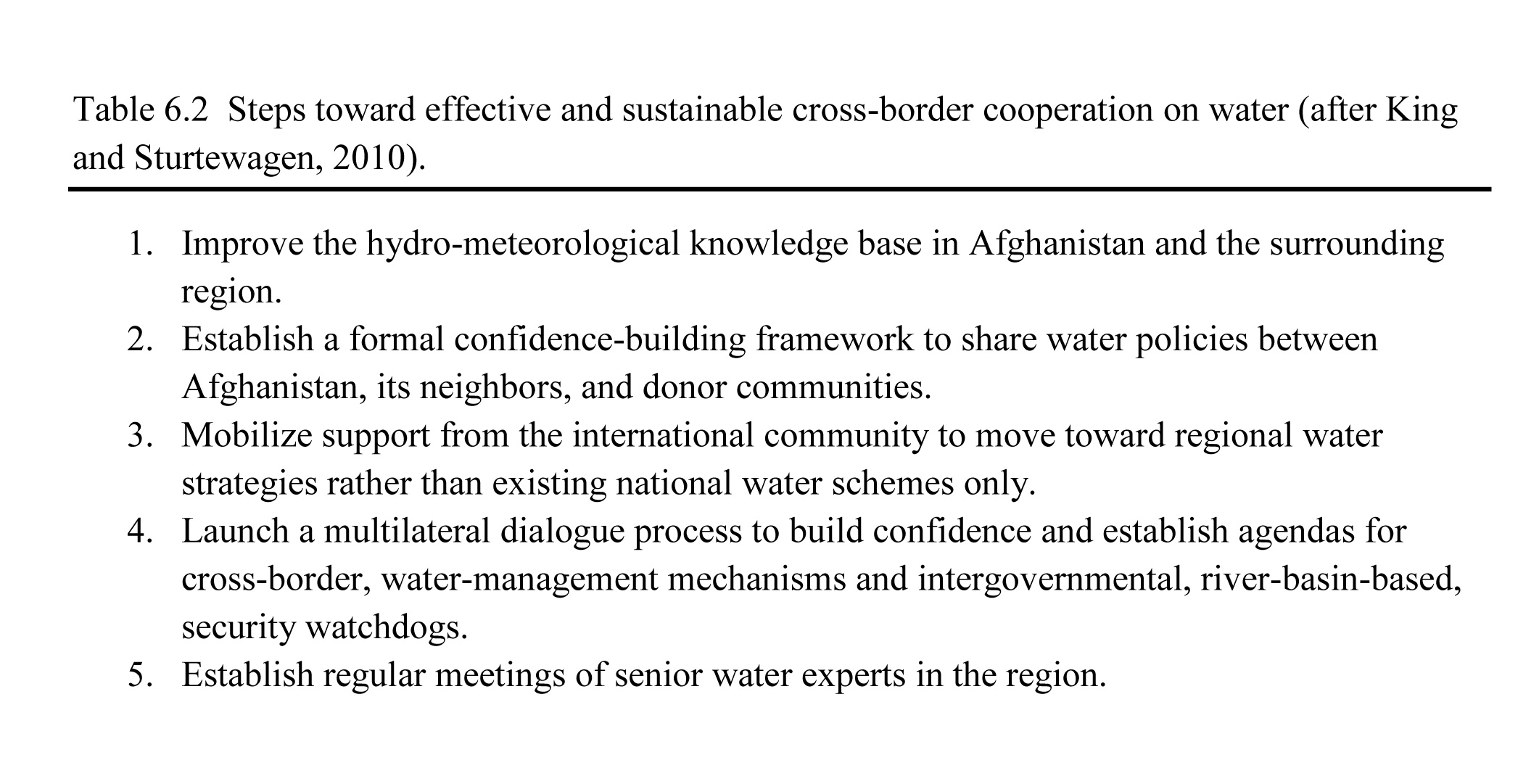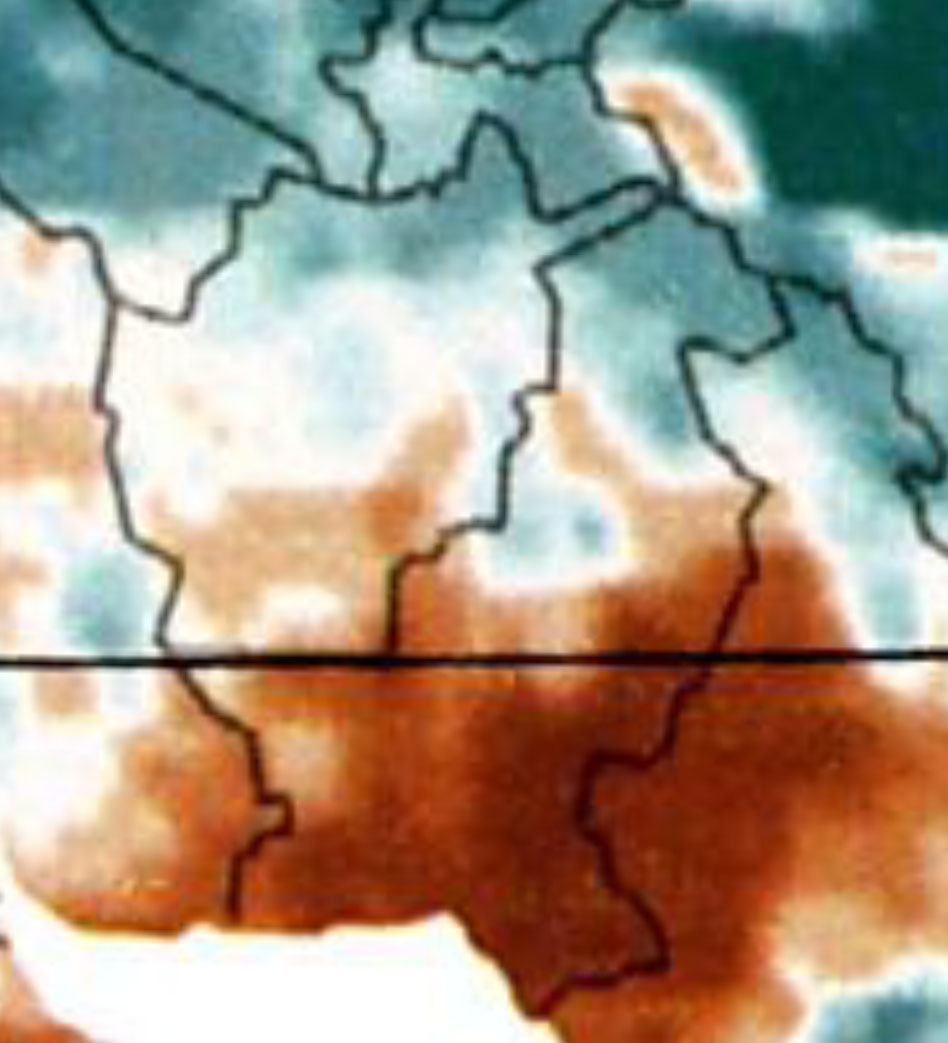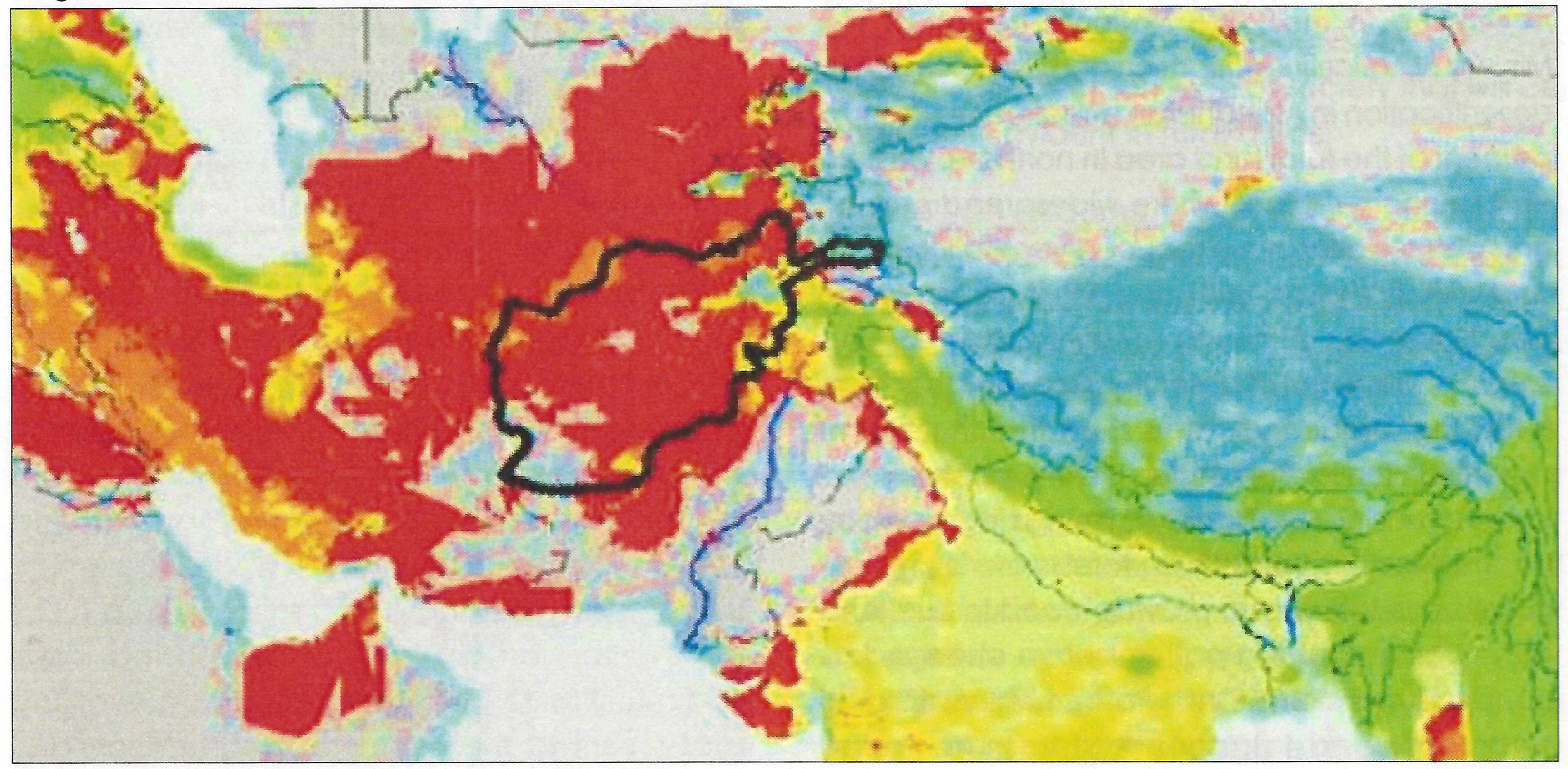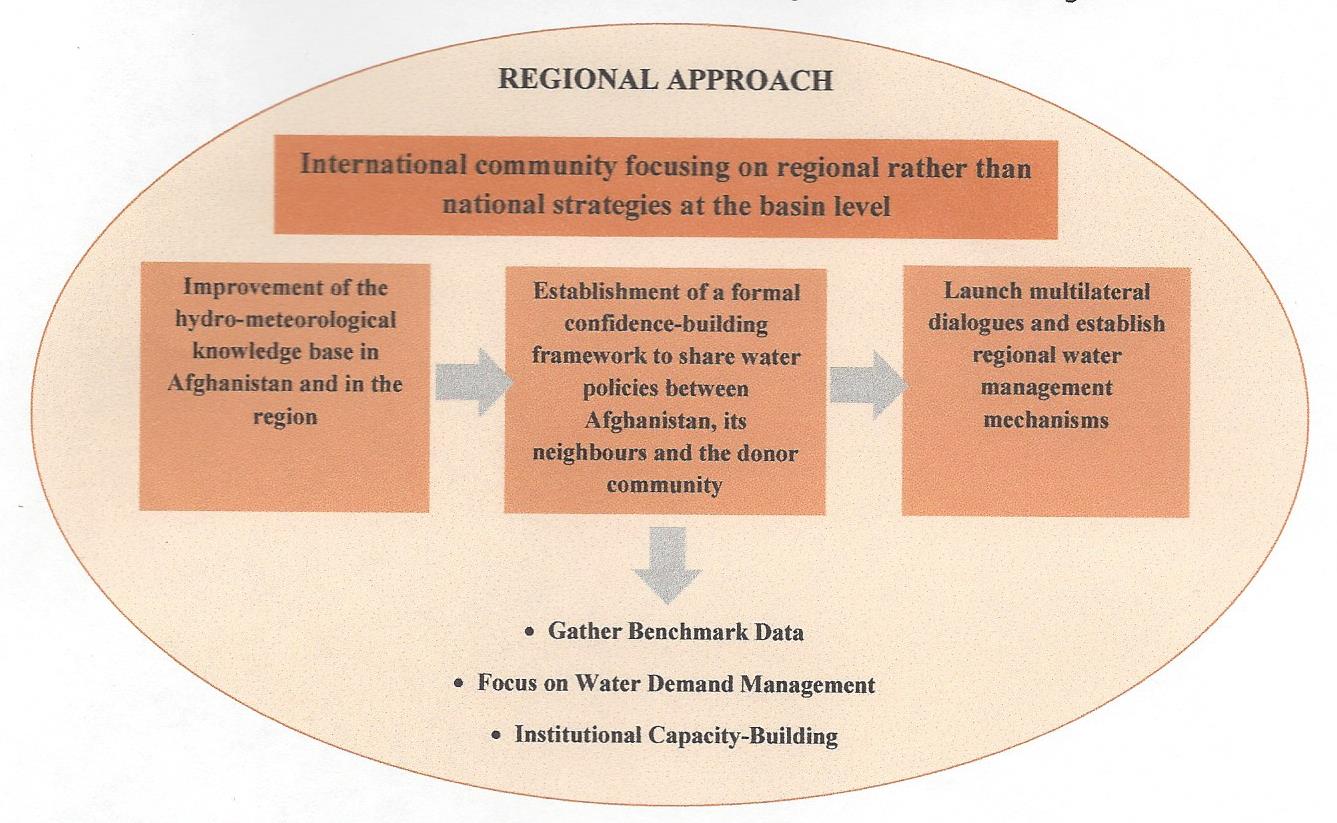Distance Learning Module 6 - Climate Change Implications in Central and South Asia
- World climates have been noticeably changing in recent years as industrialization and agriculture have added ever more carbon dioxide (CO2) and methane (CH4) gases into the atmosphere.
- Such greenhouse gases allow sunlight heat energy to penetrate through the atmosphere but not to go back out again so the heat builds up.
- As the Earth warms up, the glaciers melt away and the warmer air increases evaporation of water on the ground – the result is increased droughts, and loss of river and lake water.
- Increased droughts and greater water usage by humans is expected to cause ever more problems.
- Such problems have caused many disruptions and violence (Figure 6.1; Table 6.1).
 Figure 6.1. Map of Afghanistan showing numerous problems with water shortages caused by climate change. Dams are an effort to save more water upstream to help Afghans. This causes problems downstream in Pakistan and Iran.
Figure 6.1. Map of Afghanistan showing numerous problems with water shortages caused by climate change. Dams are an effort to save more water upstream to help Afghans. This causes problems downstream in Pakistan and Iran.

- In some cases rain storms may become more catastrophic, creating more floods and more rapid wet debris flow masses of rocks and mud that sweep down into valleys from mountain slopes.
- Climate change will also lead to a loss of many plants though drought stress.
- Afghanistan and the surrounding countries have to measure all their sources and amounts of water so that they will be able to talk to the neighboring countries from a position of knowledge and intellectual strength (Table 6.2).

- The best modern scientific thinking shows that Southern Afghanistan will probably become drier in the next 15 – 20 years (Figure 6.2).
 Figure 6.2. Map of Afghanistan in about the year 2030 showing most probable decrease in rain in southern Afghanistan (brown). This map by the US National Geographic Society is based upon the best available science prediction made by mathematical climate modeling with a computer climate change model. It is possible that rain and snow will increase in the north of Afghanistan (blue). Such precipitation increase has been noticed already in the Western Himalaya mountains of Pakistan.
Figure 6.2. Map of Afghanistan in about the year 2030 showing most probable decrease in rain in southern Afghanistan (brown). This map by the US National Geographic Society is based upon the best available science prediction made by mathematical climate modeling with a computer climate change model. It is possible that rain and snow will increase in the north of Afghanistan (blue). Such precipitation increase has been noticed already in the Western Himalaya mountains of Pakistan.- As Afghanistan and other areas dry out more, the problem of change of land to desert also increases. This is the terrible problem of desertification (Figure 6.3)
- It is possible that Northern Afghanistan will receive more precipitation in that same period of time (Figure 6.2).
 Figure 6.3. Assessment of vulnerability of Afghanistan to desertification, where red indicates the highest vulnerability. As can be seen, most of the country is subject to full conversion to desert. Light blue and light gray are already full deserts (after US Department of Agriculture, 1998; Norgrove et al., 2008; UNEP, 2009).
Figure 6.3. Assessment of vulnerability of Afghanistan to desertification, where red indicates the highest vulnerability. As can be seen, most of the country is subject to full conversion to desert. Light blue and light gray are already full deserts (after US Department of Agriculture, 1998; Norgrove et al., 2008; UNEP, 2009).
- One of the only solutions to these severe problems is for much better measuring of water volumes in the country and sharing this information so that water scientists everywhere can try to help understand and fix water-shortage problems where possible (Figure 6.4; Table 6.2).
 Figure 6.4. Diagram of a new regional approach to management of water in Afghanistan and surrounding countries as the climate changes and the water decreases. The main ideas here are to gather as much new information as possible, and to share the information as much as possible because it will take great effort to solve these problems for the benefit of the Afghan people.
Figure 6.4. Diagram of a new regional approach to management of water in Afghanistan and surrounding countries as the climate changes and the water decreases. The main ideas here are to gather as much new information as possible, and to share the information as much as possible because it will take great effort to solve these problems for the benefit of the Afghan people.